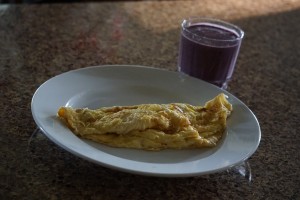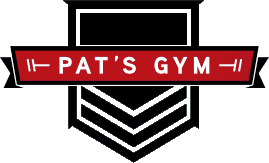 Most people looking to lose weight, always think it’s the diet that matters. Well, you have to know what to eat, how to workout to burn fat, and not to overdo any one of those elements. Many enthusiastic people restrict their calories too much and find that they will actually gain weight. What happens, in this case, is that your body goes into starvation mode and it begins to store most calories as fat trying to protect the body. Generally, this will happen when calories are under 1000 per day. A lot is dependent upon the individual, but I generally don’t recommend people eat less than 1200 calories per day.
Most people looking to lose weight, always think it’s the diet that matters. Well, you have to know what to eat, how to workout to burn fat, and not to overdo any one of those elements. Many enthusiastic people restrict their calories too much and find that they will actually gain weight. What happens, in this case, is that your body goes into starvation mode and it begins to store most calories as fat trying to protect the body. Generally, this will happen when calories are under 1000 per day. A lot is dependent upon the individual, but I generally don’t recommend people eat less than 1200 calories per day.
A good way to determine how many calories you need is to determine your caloric defect. That means you need to know how many calories you consume in a day, and how many calories you will burn in a day. What you’re looking for is creating a net negative calorie count each day. Working out will help you burn more calories in a day than you normally do. You really have to determine what works for you both on the caloric intake side and on the burn side. However, this is what I’ve learned:
You have to experiment with counting calories at first. You have to be educated on good sources of macros and bad sources. Think about eating 4 oz of Oreos versus 4 oz of spinach. What will fill you up more and what will simply be dead calories. Use an app like MyFItnessPal to determine where your calories are coming from, and where should they be coming from. These apps will also help you determine roughly how many calories you’re burning from various exercises/workouts.
I’m at a point in my fitness journey where I don’t count calories. I only eat high-quality food from good sources and know which ones are rich in macros and how many I need. I can tell if I am in a calorie deficit situation or not. I workout intensely so I don’t need to worry about consuming too many calories, I need to worry about consuming enough calories. It changes on a daily basis, and I always eat with a purpose.
You have to assess your own situation. I recommend keeping track of the food you consume; specifically, the macros and the calories. Also, you may want to see if you’re reaching your goals. I have described the ideal macros you need in previous knowledge posts.
I don’t generally recommend looking at a scale when you’re working out because you’re losing more fat and gaining lean muscle. Muscles weigh more than fat, so although you’re tightening up your body, your scale may show that you weigh more. I recommend looking at yourself naked in the mirror and measuring the fat you’re losing by how your clothes fit. Now don’t be neurotic about it. It’s more important to lose fat than lose pounds on the scale.
I recommend working out, in addition to watching what you eat. Working out will help you burn calories long after your workout. In addition, you will be tightening up while you build lean muscle mass and lose fat. However, I don’t recommend overdoing the working out. I recommend you stay with 1-hour workouts per day, or possibly mixing in two 1 hour workouts in a day separated by 2 – 3 hours during which you will fuel up. In addition, I recommend that most people who exercise regularly can lose weight by limiting their intake to 1,200 to 1,600 calories per day. Don’t go too low – you won’t have the energy you need to workout.
I have 3 rules regarding eating:
Load up on healthy carbs – Include carbs that are rich in nutrients and low in calories. First, carbs provide your body with the energy it needs to get through your workout. These healthy carbs include fruits, veggies, and whole grains. In addition, fruits and veggies are considered low-energy-density foods, which means they have few calories compared to their serving size. Simply put, people who eat low-energy-density foods have an easier time losing weight and keeping it off because they feel full on fewer calories.
Load up on lean sources of protein – Protein is important for building lean muscle mass. Lean sources of protein include poultry, seafood, and lean red meat. If you’re a vegetarian it could include beans, leafy greens, and soy products (if you eat them). The good thing about proteins is that they make you feel full, and keep you feeling that way longer.
Don’t shy away from fats – but make sure that it’s healthy fats that you’re consuming, but don’t overdo it. Include mostly unsaturated fats such as those found in avocados, nuts, seeds, certain oils, fatty fish and lean proteins. Healthy fats will make you feel full longer.
In trying to gain weight or lose weight, be knowledgeable about what you’re doing. You may want to look at my previous Knowledge Posts on the Pat’s Gym website. It will guide you through most questions you have. However, if you can’t find the answer always feel free to email me at pat@patsgym.com.
